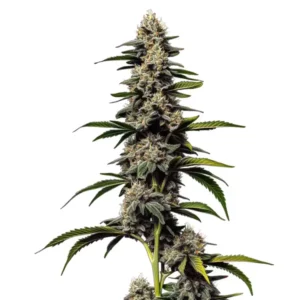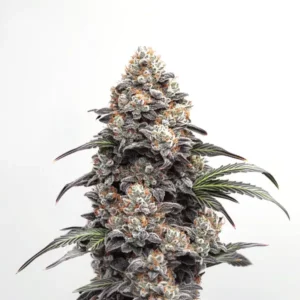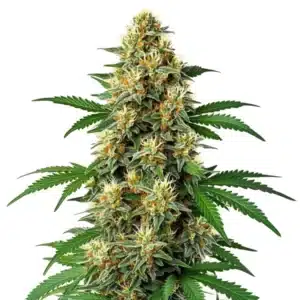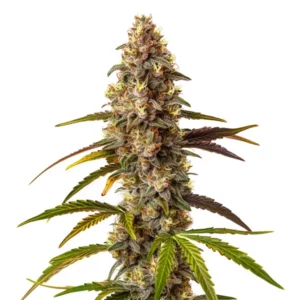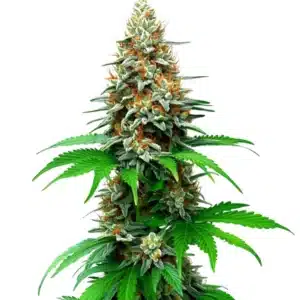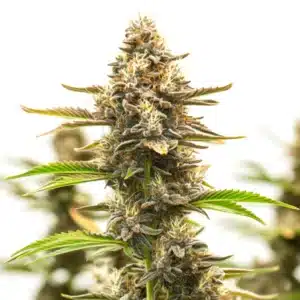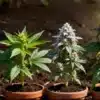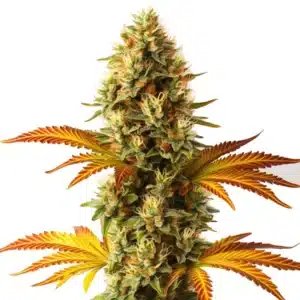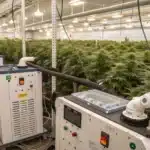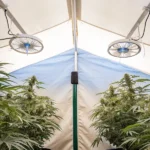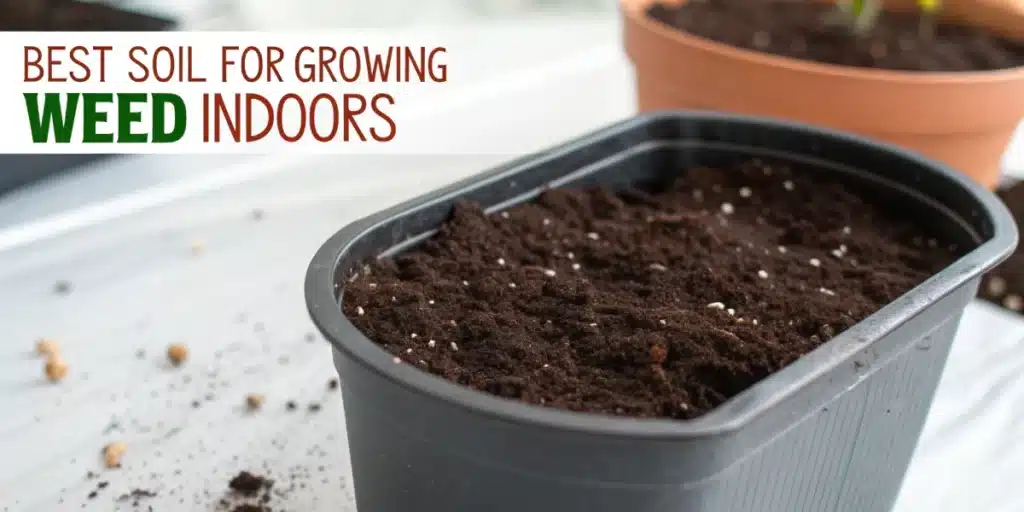
Best Soil for Growing Weed Indoors
Best Soil Growing Weed Indoors – Soil Fundamentals
Nutrient Content
When it comes to the best soil for growing weed indoors, understanding nutrient content is vital. For any indoor grow, the first rule is to start clean. Always use new, high-quality bagged soil from a reputable brand that guarantees its product is treated and free from pests, larvae, or eggs. Introducing contaminated soil into a sealed environment is a recipe for disaster.
Choosing a soil mix rich in organic matter can significantly enhance nutrient availability. Organic materials such as compost and worm castings not only provide nutrients but also improve soil structure, promoting better aeration and drainage. A rich nutrient profile ensures your cannabis plants have everything they need to flourish and produce high-quality buds.
Recommended Strains
Alien Cookies x Kush Mints
|
|
THC | 33% - 34% (High) |
|
|
Type | Feminized |
|
|
Yield | High |
|
|
Phenotype | 80% Indica / 20% Sativa |
Alien GG
|
|
THC | 23% - 24% (Medium) |
|
|
Type | Feminized |
|
|
Yield | High |
|
|
Phenotype | 70% Indica / 30% Sativa |
Tip: Adding bat guano or worm castings: is a natural and powerful way to feed your soilespecially when reusing it after a grow. These organic additions revitalize tired substrates and help sustain microbial life.
Another aspect to consider is the nutrient release rate. Slow-release fertilizers are great for providing a consistent supply of nutrients over time, while fast-acting options can give a quick boost when plants show signs of deficiency. By selecting the right nutrient content for your indoor weed soil, you’ll set your plants up for success from the start.
pH and Texture
The pH level of your soil is another critical factor. Cannabis thrives in slightly acidic conditions, with an ideal pH range of 6.0 to 6.8. If the pH is too high or too low, nutrient uptake can be severely hindered. It’s also critical to remember that the pH of your water will directly influence the soil’s pH over time. Consistent watering with improperly pH’d water will gradually shift the soil’s balance, so regularly monitoring both your water and your soil runoff is essential for long-term stability.
Specialist Insight: While some sources may suggest up to 6.8 or 7.0, pH 7 is too high for indoor cannabis. Aim for 6–6.5 for optimal nutrient absorption and color expression in your plants.
Texture also plays a significant role. A well-balanced soil mix combines clay, silt, and sand to create a structure that allows for adequate drainage while retaining enough moisture. The ideal soil should also be free of debris. It should not contain large sticks, stones, or wood chips that can physically obstruct rapid root development. Aim for a texture that promotes healthy root development and supports the overall health of your cannabis plants.
Promos & Deals
Best Soil Growing Weed Indoors – Soil Types
Organic vs. Soilless
When selecting the best soil for growing weed indoors, you’ll come across two main categories: organic and soilless.
Organic soil is made from natural materials such as peat moss, compost, and other organic amendments. This type of soil supports beneficial microorganisms and fosters a balanced ecosystem that can enhance plant health. For growers who want to mix their own high-performance organic soil, a classic and highly effective recipe is the ‘super soil’ blend. A fantastic starting point is a mix of one-quarter black peat, one-quarter white peat (or sphagnum), one-quarter perlite for aeration, and one-quarter nutrient-rich humus, such as worm castings.
On the other hand, soilless mixes are created from materials like coco coir, perlite, and vermiculite. These mediums are designed to provide excellent drainage and aeration while allowing for precise control over nutrient delivery. Soilless mixes are particularly popular among hydroponic growers who want to maximize yields and control every aspect of the growing environment.
There is a key philosophical and practical difference between these two approaches. Organic soils are more forgiving; the rich ecosystem of microbes and organic matter acts as a buffer, making them more resilient to minor mistakes in pH or feeding. This makes them great for beginners. Inert, soilless mediums, on the other hand, are less forgiving—errors in pH or nutrient delivery show up quickly and can be costly. However, this direct control allows expert growers to push their plants to the limit, often resulting in higher THC production and larger yields.
Reminder: Soilless setups require supplementing every nutrient from base macros to micro vitamins so keep feeding schedules tight and dialed in.
Improving Drainage and Aeration in Indoor Weed Soil
A major component of the best soil for growing weed indoors is how well it drains and breathes. Without proper drainage and aeration, your cannabis roots can become waterlogged, oxygen-deprived, and prone to disease. Whether you’re mixing your own indoor weed soil or purchasing a ready-made blend, enhancing these two factors is a game-changer for plant health.
Cannabis roots need oxygen as much as they need water. Soil that stays too wet for too long can create anaerobic conditions, where harmful microbes thrive and root rot becomes a real threat. On the flip side, overly dry soil lacks the water retention needed for consistent nutrient uptake.
The key is balance: your indoor weed soil should retain enough moisture to hydrate roots without becoming soggy. A light, fluffy texture helps air circulate around the root zone, promoting faster growth and more robust plants. Incorporating elements like perlite, vermiculite, or coco coir can make all the difference in creating a well-structured, breathable soil.
Pro Tip: At the bottom of each pot, place a layer of gravel or coarse soil. This boosts drainage and prevents roots from clogging the outlet holes a common cause of root stress and rot.
Why Perlite, Vermiculite, and Coco Coir Matter
These three components are staples in any high-quality indoor weed soil mix. Perlite, a white volcanic rock, adds excellent drainage and prevents compaction. It helps water flow through the soil while maintaining tiny air pockets for roots to breathe.
Vermiculite retains more moisture than perlite, making it ideal if your environment tends to be on the dry side. It also holds nutrients well, ensuring consistent feeding. Many growers use a combination of both perlite and vermiculite to fine-tune their mix.
Coco coir, derived from coconut husks, is another fantastic addition. It offers a neutral pH, retains water efficiently, and resists compaction. Plus, it supports strong root development due to its airy structure. Coco coir can be used as a standalone base or blended with soil to boost aeration.
Together, these components turn basic dirt into a performance-grade indoor weed soil mix. They’re especially useful for beginners looking to avoid watering issues or compacted root zones. If you want the best soil for growing weed indoors, don’t underestimate the power of a well-aerated substrate.
Avoiding Compacted Soil and Root Problems
Compacted soil is one of the silent killers of indoor cannabis plants. It restricts oxygen flow, traps moisture, and limits root expansion. The first step in preventing this is selecting a light, airy mix that naturally resists compression. Next, consider your choice of container. Fabric pots or smart pots are excellent options because they allow air to penetrate the sides. Watering technique also plays a role; always water slowly and evenly.
Over the course of a grow, you may notice the soil level dropping as it settles and compacts with each watering. This can eventually expose the upper roots. When this happens, it is good practice to top up the pot, replacing the lost volume with more fresh, airy soil to cover the roots and support the plant’s base.
Finally, between grow cycles, fluff up the soil with a hand trowel or small rake. This restores structure and prepares the substrate for new roots.
Watch Out: Reused soil can harbor insect larvae or fungal spores. Always inspect and refresh reused media thoroughly.
Best Soil Growing Weed Indoors – Maintenance Tips
Reuse and Amendments
To make the most out of your indoor weed soil, consider reusing and amending your soil after each grow cycle.
Reusing soil can save money and reduce waste, but it requires effort. After each cycle:
- Remove roots and plant debris.
- Loosen compacted areas with a rake or fork.
- Mix in worm castings, compost, or guano to restore nutrients.
- You can also adjust pH using lime (to raise) or sulfur (to lower), depending on test results.
🦠 Heads-Up: Old soil may contain larvae, whitefly eggs, or pathogens. Baking or “cooking” the soil at low temperatures, or using beneficial nematodes, can help sanitize it before reuse.
Keep an eye on soil moisture throughout your grow. Overwatering is one of the most common mistakes, especially with reused or dense soils.ts.
FAQS
What is the best soil for growing weed indoors?
The best soil for growing weed indoors typically includes a mix of organic matter and well-draining components like perlite or coco coir. A pH level between 6.0 and 6.8 is ideal for nutrient uptake.
Can I reuse soil for my next grow?
Yes, you can reuse soil, but it’s crucial to refresh it with organic amendments and remove any leftover roots or debris. This helps maintain nutrient levels and soil structure.
How often should I water my indoor cannabis plants?
Watering frequency depends on various factors, including pot size, plant size, and environmental conditions. Generally, it’s best to allow the top inch of soil to dry out before watering again to prevent overwatering.


